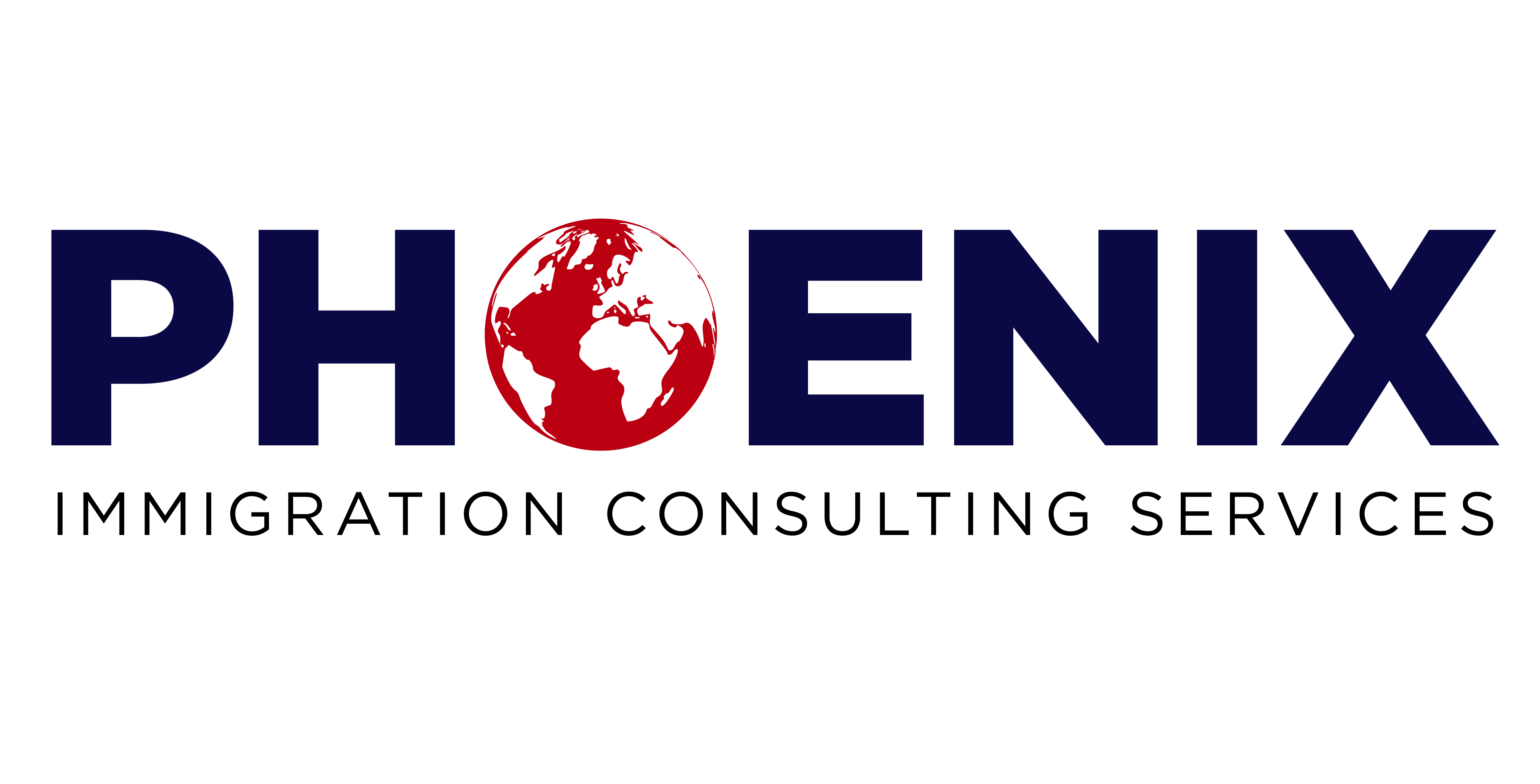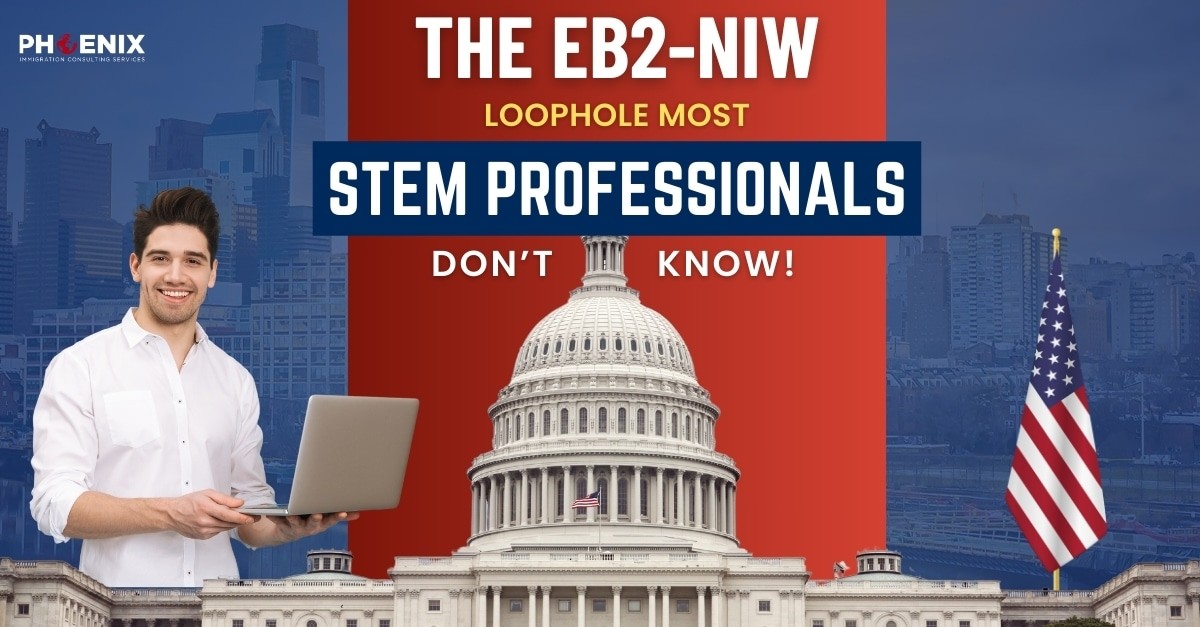The EB2-NIW Loophole Most STEM Professionals Don’t Know!
1. Introduction: The Untold Secrets of EB2-NIW for STEM Professionals
EB2-NIW (Employment Based Second Preference National Interest Waiver Visa) stands as one of the most sought after immigration programs available for highly skilled professionals, especially those working in STEM fields. Regardless of the opportunities it provides, numerous professionals in STEM either overlook the opportunity of applying for the EB2-NIW or do not use it to their best advantage. This blog will explore the undiscovered benefits of EB2-NIW and share insights on why it happens to be the most appealing offer for STEM professionals wishing to reside permanently in the U.S.
Why Is This EB2-NIW Opportunity Often Overlooked by STEM Professionals?
- Not Being Informed: Many professionals of specialized domains tend to have a “conventional” approach to their work, which encompasses employer-based green cards, H-1B visas, or even the EB1 visa. Unlike those, EB2-NIW offers a self-petitioning route — perfect for freelancers or consultants.
- National Interest Misinterpretation: Many think “national interest” means government-funded or revolutionary science. In reality, it broadly includes contributions to the economy, health, or national security.
- Overestimating the “Exceptional Ability” Standard: STEM professionals often assume only world-renowned experts qualify. In truth, many with advanced degrees or proven track records meet the criteria.
- Fear of Complexity: The legal paperwork can seem overwhelming, but with proper guidance from immigration attorneys, it becomes manageable and rewarding.
EB2-NIW vs. Other Employment Based Green Card Options
1. EB2-NIW vs. EB1
The EB1 visa is for individuals with extraordinary ability — such as award-winning scientists or senior executives. EB2-NIW, however, is more accessible for skilled professionals making a national impact.
- EB1: Requires international acclaim or significant recognition.
- EB2-NIW: Requires an advanced degree or exceptional ability; no employer needed.
2. EB2-NIW vs. Standard EB2
The regular EB2 visa needs a U.S. employer sponsor and labor certification. EB2-NIW bypasses both by allowing self-petitioning for applicants whose work benefits the national interest.
- EB2: Employer sponsorship and PERM labor certification required.
- EB2-NIW: No employer required; ideal for independent professionals.
3. EB2-NIW vs. EB3 Visa
The EB3 visa is more competitive and time-consuming due to high demand and strict job requirements. EB2-NIW offers a faster and more flexible pathway for skilled professionals.
- EB3: Requires job offer and two years of training or experience; longer wait times.
- EB2-NIW: Faster processing for qualified professionals without employer dependency.
2. How the EB2-NIW Loophole is a Game-Changer for Highly Skilled STEM Professionals
The EB2-NIW visa is more than just a green card. It is a game-changer in U.S. immigration for STEM professionals because it skips the employer sponsorship, labor certification, and long waiting periods of traditional immigration methods.
Why is There a Loophole?
The loophole regarding the EB2-NIW visa stems from not requiring PERM labor certification and employer sponsorship, which is customary for other work-related green cards. Professionals are allowed to self-petition because of the merit and national importance of their work.
This implies there is no need to:
- Secure a contract with an American employer to act as a sponsor.
- Undergo the intricate and laborious processes with the Department of Labor.
- Compete in the highly competitive H-1B visa application pools and be limited to a single employer.
STEM professionals in AI, robotics, environmental science, biomedical research, renewable energy, and data science are highly sought after in the United States regardless of employer affiliation. The National Interest Waiver system understands this need.
Maximizing the Benefits of Self-Petitioning
What is Self-Petitioning and Why Does It Matter?
With the EB2-NIW, the applicant is given full autonomy and control, and as such, they are not reliant on an employer, meaning:
- Having more autonomy regarding career path.
- No restrictions on freelancing, entrepreneurship or changing jobs.
- The ability to apply even while in school in the U.S. (F-1 OPT/STEM OPT holders take note!)
This is valuable for:
- Postdocs, PhDs or researchers working on funded or unfunded projects.
- Startup professionals, freelance consultants or tech entrepreneurs.
- Individuals in contract roles or remote R&D collaborations.
Uncommon Ways to Show ‘National Interest’
The words “national interest” can sound intimidating, however, USCIS does allow some degree of flexibility in how it is interpreted. There is no requirement of you winning the Nobel Prize or working on a NASA mission — all one needs is to demonstrate how their work is of significant value to the U.S.
Innovative and Out-of-the-Box Strategies for STEM Experts
- The Tech Startup: Do you aim at a particular problem in the U.S. like needing AI for healthcare? If yes, present your business plan, your unique market impact, and any patents or IP that supports your case.
- Public Health Efforts: This goes beyond medicine to include infrastructure healthcare engineering such as clean water technologies, medical bioinformatics, and clinical medical imaging.
- Cybersecurity and Defensive Measures: Professionals dealing with cybersecurity, blockchain, or AI security directly contribute to national security and the economy.
- Climate Tech and Green Energy: Low carbon technology developers and innovators in sustainable energy are highly aligned with U.S. national interests, especially under the Inflation Reduction Act.
- STEM Community and Education Projects: Mentoring programs for underrepresented communities, free educational outreach, and open-source scientific platforms can also fulfill the “national interest” clause.
TIP: Claim impact, innovation, and outreach using expert letters and relevant media publications. U.S. government contracts are not required — but the impact of your work must be evident and well-documented.
3. The EB2-NIW "Research Contribution" Angle: A New Twist for STEM Professionals
Not only world-renowned scholars are eligible for the EB2-NIW visa. Actually, a lot of STEM workers qualify by telling the story of their scientific or technical work—even if they have never published in Nature or Science.
Steps to Achieve ‘EB2 NIW’ Success by Positioning Research Contributions
As for USCIS, it seems far less concerned with your research’s publication venue and much more with how it advances the interest of the United States. That means even modest contributions in frontier areas like:
- Green technology
- AI and machine learning
- Cybersecurity
- Telehealth
- Biostatistics
- Infrastructure innovation
have the potential to construct a strong EB2-NIW petition—when put in the right context.
Practical imagination of this sort is super useful for an EB2-NIW petition.
What does the USCIS consider important?
- Innovation or considerable functional advancement
- Actual implementation or endorsement of the applicant's work
- Impact within the applicant's sphere of influence, no matter how niche or specific it is
- Ability to create an otherwise unattainable scope of effect on the national level
Case Studies of Non-Traditional STEM Projects Approved Under EB2-NIW
Let’s examine lesser-known but successful EB2-NIW petitions that do not fit the “published PhD researcher” stereotype. The following examples showcase the variety of disciplines and creative approaches to establishing national interest.
Case Study #1: Public Safety Improvement Through Data Analysis
- Specialty: Data Science
- Accomplishment: Developed a predictive model for policing that helps identify potential areas for crime in urban areas that are often neglected.
- Impact: Improved the effectiveness of law enforcement resource allocation through predictive policing models.
- EB2-NIW Angle: Example model of value added alongside societal contribution to U.S. public safety and crime prevention.
Why it worked: The applicant provided strong evidence of the adoption of their model by showcasing endorsements from city officials, which garnered support from governmental institutions.
Case Study #2: Renewable Energy Technician
- Field: Environmental Engineering
- Work: Created a solar panel maintenance tool for economically disadvantaged regions
- Result: Adopted by a non-profit organization in Arizona and New Mexico
- EB2-NIW Angle: U.S. clean energy and sustainability goals
Why it worked: Bridged grassroots level ingenuity with federal energy priorities using cited documents from NGOs and regional clean energy coalitions.
Case Study #3: Agricultural Robotics Engineer
- Field: AgriTech / Robotics
- Work: Developed a robotic weeding mechanism for U.S. farms with labor shortages
- Result: Mechanism tested in three farms in the Midwest to increase yield and decrease labor cost
- EB2-NIW Angle: Food security, rural economic development, and innovation in technology
Why it worked: The petition highlighted how this innovation addresses critical gaps in the supply chain and enhances the productivity of domestic agriculture.
Case Study #4: The Developer of a Telehealth Platform
- Industry: Information Technology in Health Care
- Task: Developed a HIPAA-compliant telemedicine platform for use by clinics in rural parts of America
- Accomplishment: Improved healthcare accessibility in areas lacking sufficient medical services
- EB2-NIW Perspective: Enhances equity in public health services and modern infrastructure in the United States
Key Point
The above case studies indicate:
- There is no need to have worked at MIT or NASA
- The impact of your work is of greater importance than your status
- National alignment of your work is a fundamentally important factor
Regardless of whether it is field research, applied innovation, or community-driven projects, you stand a chance for EB2-NIW as long as your work addresses an actual problem in the U.S.
4. Mastering the EB2-NIW Application: Hidden Details That Can Make or Break Your Case
The EB2-NIW green card is not only reliant on one’s qualifications; it’s also about how applicants present themselves as vital contributors to the U.S. economy, public health, education, or national security. While many STEM professionals qualify, failure to demonstrate how their work benefits the nation can result in denial.
More Advanced Steps: What USCIS is REALLY Looking For In EB2-NIW Petitions
It’s not just about credentials. USCIS wants to know if you matter to the broader picture of American progress. To succeed, your application must tell a convincing story tied to national needs.
What is “Exceptional Ability”?
USCIS has established basic criteria under which you can prove exceptional ability. While a Nobel Prize is not required, you generally need to meet at least three of the following (under 8 CFR §204.5(k)):
- A degree or certificate in the field of expertise
- At least 10 years of experience in the relevant field
- Licenses or professional affiliations where applicable
- Recognition for measurable achievements such as awards, press, or peer-reviewed publications
- A high salary or remuneration that reflects your expertise and stature
How to Prove “National Interest”
The legal standard comes from the Matter of Dhanasar precedent and includes a three-pronged test:
- The proposed endeavor has substantial merit and national importance
- The applicant is well-positioned to advance the endeavor
- It would benefit the U.S. to waive the labor certification requirement
To maximize your case strength, connect your work to U.S. strategic initiatives, such as:
- Clean energy and climate change
- Public health and pandemic preparedness
- Artificial intelligence and cybersecurity
- Supply chain resilience
- Education and workforce development
Pro Tip: Link your work to official U.S. sources like White House policy briefs, NIH/NSF funding reports, or DOE roadmaps to demonstrate alignment with national interests.
Targeted Strategy with Letters of Recommendation
One of the most strategic—but often overlooked—elements of an EB2-NIW petition is the use of advocacy letters. These are not standard reference letters; they are targeted endorsements aimed at showing national benefit.
What Makes a Letter Effective?
Strong recommendation letters should:
- Come from recognized experts in your field. They need not be world-famous but should hold credible academic, industry, or government roles.
- Highlight your unique contributions with concrete details.
- Explain your work’s relevance to U.S. priorities and justify why a waiver of labor certification is warranted.
Compare:
Who Should You Ask?
When selecting people to write letters, consider:
- Current or former collaborators who know your work deeply
- Experts familiar with your work, even if you haven’t worked directly with them
- Leaders of professional organizations or academic conferences
- U.S.-based professionals, especially if your work is already being implemented or recognized in the U.S.
Strategic letter writing can significantly increase your chances of approval, particularly when your narrative is backed by U.S.-aligned data, measurable outcomes, and credible endorsers.
5. Avoiding Pitfalls: Mistakes STEM Professionals Make with EB2-NIW Applications
The EB2-NIW category offers a unique and powerful pathway to permanent residency for STEM professionals. However, success hinges on more than credentials—it depends on strategic presentation, alignment with U.S. national interests, and timing. Many qualified applicants face rejection not because they lack merit, but due to errors in how they structure and present their case.
- Let’s examine how STEM applicants can avoid the two most common and costly mistakes.
Neglecting the Connection Between Work Performed and National Interests of the U.S.
The Mistake: Many applicants overemphasize:
- Academic degrees and credentials
- High citation counts and publications
- Past achievements that are not tied to present or future U.S. needs
While these are helpful, they do not automatically satisfy the “national interest” requirement unless they are explicitly tied to American priorities in science, technology, health, or public policy.
The Fix:
Applicants must connect their work to national interest with specificity and clarity. Ask yourself:
- How does your AI work advance cybersecurity goals?
- In what ways does your biomedical research enhance rural or public health access?
- Does your work in renewable energy align with U.S. climate or energy independence policies?
Use policy language when possible. Reference U.S. government frameworks such as:
- National AI Initiative Act
- FDA’s AI/ML Action Plan
- Inflation Reduction Act
- CHIPS and Science Act
Ignoring Strategy as It Relates to Timing in Your Application
The Mistake: Timing is often overlooked. Many applicants:
- Apply too early—before building a substantial record of accomplishments
- Wait too long—when past work is no longer relevant or timely
- File reactively when their visa status (like OPT) is about to expire
These timing issues can lead to rushed petitions with weak narratives.
The Fix:
Plan the EB2-NIW petition around key professional achievements and endorsements. Ideal moments to file include:
- After publishing new research
- Upon implementation of a solution, tool, or method that is in use
- When you secure influential recommendation letters
- During OPT, STEM OPT, or early H-1B when you are in valid status in the U.S.
Important: Filing early during OPT/STEM phases allows for more status preservation options during I-140 and I-485 processing.
Advanced Tip:
USCIS considers whether requiring a labor certification would pose a risk to national interest. Filing while your project is underway, and when its success depends on your continued work, strengthens your argument for a waiver.
Overall, careful alignment with national priorities and strategic timing can transform your petition from borderline to bulletproof.
6. Post-Approval: What’s Next for STEM Professionals After EB2-NIW Approval?
Receiving an EB2-NIW approval is a major milestone for STEM professionals, but it’s only one part of the journey toward permanent residency. After the I-140 petition is approved, applicants must complete the final steps to obtain their green card—and navigate their new responsibilities as future U.S. permanent residents.
Step 1: Adjustment of Status (Form I-485) or Consular Processing
If you’re already in the U.S. on a valid visa (like F-1, H-1B, or OPT), you’ll most likely file for Adjustment of Status (AOS) using Form I-485. If you're outside the U.S., you’ll complete the green card process through Consular Processing at a U.S. embassy or consulate.
- AOS: Allows you to stay in the U.S. while your green card is processed
- Consular Processing: Requires attending an interview abroad, usually in your home country
Note: You can only file Form I-485 if your priority date is current according to the Visa Bulletin. For Indian and Chinese nationals, this date may be retrogressed.
Step 2: Applying for EAD and Advance Parole
Once you file Form I-485, you are eligible to apply for:
- EAD (Employment Authorization Document): Allows you to work legally while waiting for your green card
- Advance Parole (AP): Lets you travel internationally and return without abandoning your AOS application
These documents are usually issued within 3–6 months of I-485 submission, but timelines can vary.
Step 3: Receiving the Green Card
After biometric screening and (sometimes) an interview, USCIS will approve your I-485 and mail your green card. Most EB2-NIW green cards are valid for 10 years. If your I-485 is denied, your EB2-NIW I-140 is still valid—but you’ll need to review and refile AOS under better conditions or legal guidance.
Step 4: Employment Flexibility and Immigration Freedom
Once you have your green card, you're free to:
- Work in any field or for any employer—even outside your original area of endeavor
- Start your own company or change industries without restriction
- Travel freely in and out of the U.S., provided you meet residency requirements
Important: Though you are not legally bound to stay in your field, it’s recommended to work in your proposed endeavor for a reasonable time post-green card to avoid allegations of misrepresentation.
Step 5: Maintaining Permanent Resident Status
Green card holders must:
- Live primarily in the U.S.
- Avoid extended absences (typically < 6 months outside the U.S. without a reentry permit)
- File U.S. taxes as a resident
Prolonged time abroad can raise abandonment issues, especially during the first few years of residency.
Step 6: Planning for U.S. Citizenship
After 5 years of permanent residency (or 3 years if married to a U.S. citizen), you may be eligible to apply for naturalization. Key requirements include:
- Physical presence in the U.S. for at least half the time
- Good moral character
- Basic understanding of English and U.S. civics
Becoming a U.S. citizen offers protection from deportation, ability to vote, and access to federal jobs and benefits. Many STEM professionals plan for this from the moment their green card is approved.
Bottom Line: Approval of your EB2-NIW petition is just the beginning. Thoughtful navigation of the I-485 or consular process, careful planning for your career, and understanding your long-term immigration obligations are all essential next steps.



Leave a Reply
Your email address will not be published.